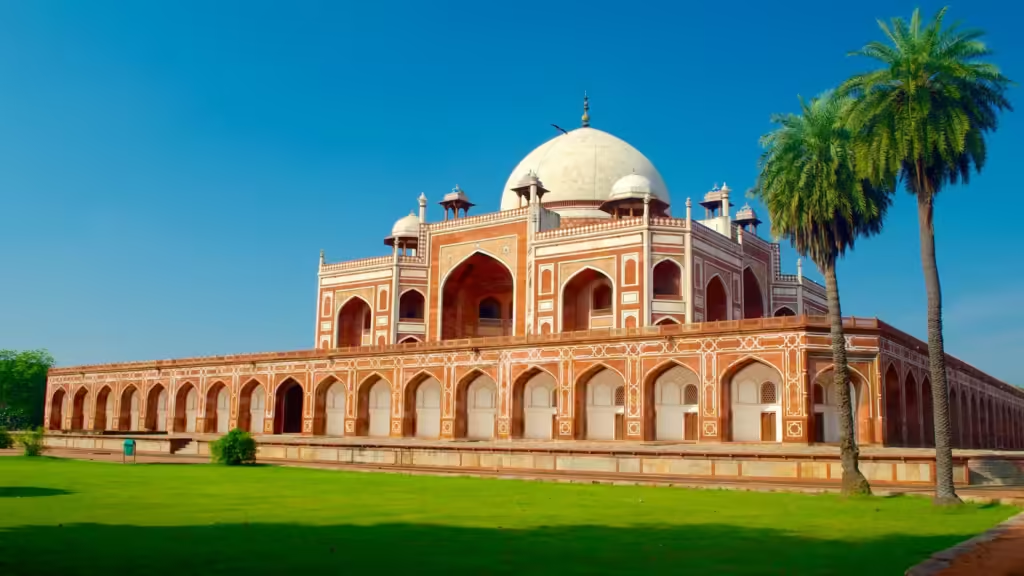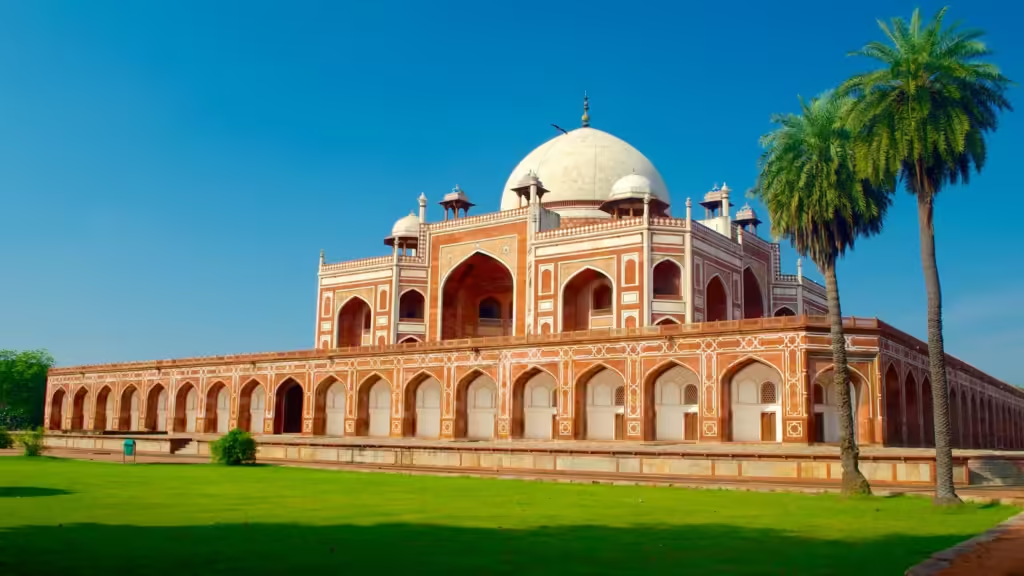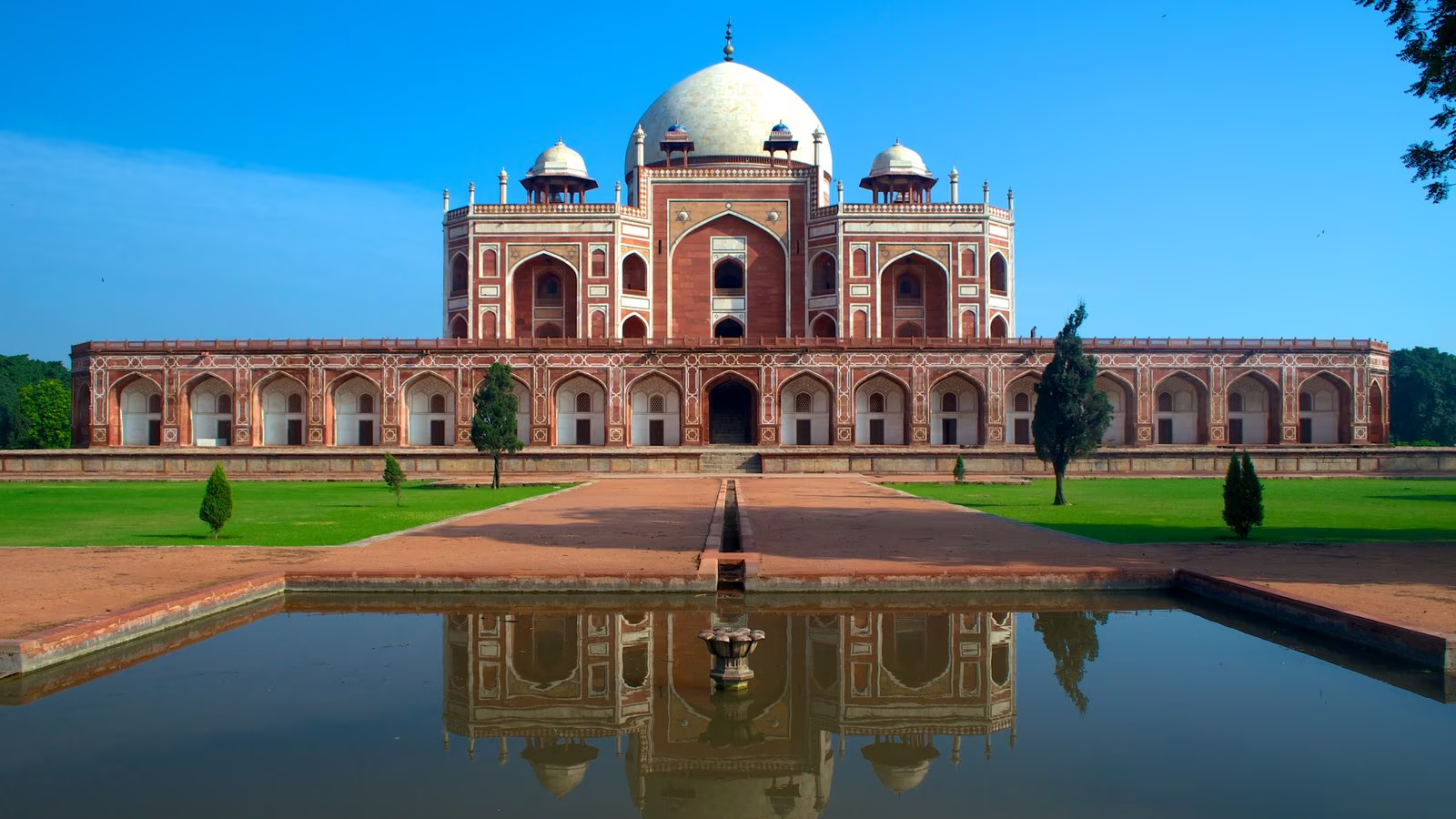Located in New Delhi, India, the Humayun’s Tomb is counted as one of the Mughal architecture wonders. The second Mughal Emperor of India, Humayun, built it during the mid-16th century. An imposing structure, no ordinary tomb, a symbol of love, an exciting wonder of Persian inspiration that gives a hint of the scale of Taj Mahal. This is outstandingly a testimony to the architectural genius and cultural syncretism of the Mughal period and generally reputed to be one of the most important historical sites in India.
H2: History of Humayun’s Tomb
H3: Humayun: The Second Mughal Emperor
He succeeded his father Babur as the second emperor of the Mughal Dynasty. Successors immediately after his death declared themselves independent. His reign was a series of trials-a loss and regain of the throne included. On his sudden death in 1556, caused by falling down the steps of his library, his widow Empress Bega Begum commissioned an exquisite mausoleum to his memory. This initiated an era of imposing Mughal tomb architecture.
H3: Construction of the Tomb
It was as late as nine years after his death, in 1565, that construction on Humayun’s Tomb began. It is that weird combination of Persian and Indian architectural features adorns this tomb, as it was completed in 1572 and came with a story to tell: first, this was the very first garden tomb in the Indian subcontinent; second, it even acted as a model of sorts for the later Mughal tombs. She actually commissioned this-a repeat client-to the Persian architect Mirak Mirza Ghiyas.
H3: World Heritage Site by UNESCO
With all the cultural and architectural importance, this tomb was declared a UNESCO World Heritage Site in 1993. Preservation of the tomb as labeled by UNESCO got really conductive with regard to the rest of the world, and one way of retaining it for the subsequent generations was designed. This status brought forth an increase in tourism at the site, and people got to know of its historical and architectural value.
H2: Humayun’s Tomb-The Marvel of Architecture
H3: Persian Touch in Design

It was an icon of great innovation in Persian-inspired design brought about by the Mughals upon coming to India. Arched entrances, domes, and tile work characteristics spoke volumes of the Persian aesthetics in the design of the tomb. This is also a sign of style typical of Islamic architecture, articulated with geometric patterns and the use of water as a decorative feature.
H3: Red Sandstone and White Marble
Characteristically typical features of Humayun’s tomb are red sandstones streaked with white marbles. The result of this contrast is tremendous, especially in the radiation of the Indian sun. Red sandstone has been said to be symbolic of strength and power while white marble denotes purity and peace-a reflection of the Mughal belief in balance and harmony.
H3: The Concept of Garden Tomb
H4: The Charbagh Garden Layout
The tomb is set within a Charbagha common Persian style division of a garden into four quadrants. It was an Islamic idea of heaven as conceptualized in highly designed pathways, greenery and waterways. The Charbagh enriches the beauty of the tomb and becomes symbolic in the marriage between the terrestrial and the heavenly realm.
H4: Water Features and Symbolism
Water, too, is believed to be a major entity in the designing of the garden as there are quite a number of water channels and fountains incorporated in the entire complex. The entities have symbolic meanings too; they are the symbolic rivers of paradise mentioned in the Holy Quran. The waters also have the purpose of aiding the coolness of the air and providing a tranquil ambiance to the visitors.
H2: Humayun’s Tomb is an Important Site in Mughal Architecture
H3: Inspiration to the Taj Mahal
While Humayun’s Tomb is said to have been a forerunner of the Taj Mahal-with architectural features in this tomb having been perfected during the nearly century-later construction of the Taj Mahal-it would become clear that both buildings have in common certain features: in a central dome, garden layout, and intricate decorative work, Humayun’s Tomb is an essential link in the evolution of Mughal architecture.
Architectural Innovations and Techniques

The process also introduced several architectural novelties and techniques in the tomb construction beginning with the double domes, enormous stone carvings on large scale as well as symmetrical design. Such innovations not only lent aesthetic appeal to the tomb but left a long-lasting impact on the succeeding Mughal architecture found on the Indian sub-continent.
Inside the Humayun’s Tomb Complex
The Main Tomb Structure
The main structure standing lofty two-levelled at the complex of Humayun’s Tomb is made up of white marble, housing the false tomb of Humayun in its inner chamber, while his real grave lies in the chamber below. Inlays of the precious and semi-precious stones have been installed on the inner walls, while the ornamental work has been done by artisans and they really represent the best of Mughal art.
H3: The Royal Cemetery
H4: Graves of Other Mughal Royals
Other than Humayun, the complex also has the graves of other Mughal royals, including his wife, Bega Begum, along with a few more from the dynasty. It will make it highly relevant and historically appealing to any visitor to the sight.
H3: Other Buildings within the Complex
H4: Isa Khan’s Grave
Other key structure which comprises the complex of Humayun’s Tomb is the Isa Khan’s Tomb. This tomb was built earlier from that of Humayun’s Tomb, it has an octagonal shape which differentiates it and marks it to pre-Mughal style of architecture. It also consists of an octagonal-shaped garden around it enhancing its beauty .
H4: Bu Halima’s Garden and Tomb
One of the interesting features in the Humayun’s Tomb complex is the less famous garden and tomb of Bu Halima. It is considered that the garden derives its name from Bu Halima, a well-born lady of the Mughal court. The tomb, much simpler in comparison with the rest, comes as an added feature in the historic fabric at this place.
H2: Restoration and Preservation Efforts
H3: Early Attempts at Restoration
There has, in fact been restoration over the centuries-more correctly during the British colonial era-in the direction of maintaining the structural soundness of the tomb along with its aesthetic beauty. Unfortunately, some early restorations were not authentic and led to the loss of original features.
Recent Conservation Projects H3:
Large-scale conservation programmes for the last twenty years continued to restore life to Humayun’s tomb. These include amongst others, the traditional material-use and workmanship methods conservation programmes adopted by Aga Khan Trust for Culture and Archaeological Survey of India in an effort at sustaining authenticity in the site.
H3: Community Participation and Heritage Conservation
It has also been argued that the restoration of Humayun’s Tomb had something to do with the involvement of a community in raising awareness related to heritage preservation at local levels. A community was also involved with various programs, not to make them understand the historical importance of the place but to involve them in other ways of conservation in different areas.
Humayun’s Tomb: Visiting It Now
Reaching Humayun’s Tomb
The tomb is fairly approachable from any part of New Delhi. The site could be reached by metro, bus, or even a taxi. The nearest metro station is the JLN Stadium that falls on the Violet Line, hence pretty easily approachable for locals and tourists alike.
H3: Best Time to Visit
This is because during this time, the climatic condition is usually mild with a cool temperature, therefore making it easy for visitors to tour and view the complex. The best time is usually morning and late afternoon when the sun is soft. H3: Entry Fees and Timings
The Entry Fee and Timing for this paid monument always feature on this official website. Subsidised charges provided on Indian and International tourists are provided to students and children. Any visitor can check on these aspects before planning a visit.
Conclusion
Humayun’s tomb is no monument; it is a living chronicle of times breathed with grandeur akin to one of the most majestic ages of the Mughals. Architectural brilliance, combined with rich historic significance and soothing surroundings, makes these a joy to be visited by any who happen to have any interest whatsoever in the cultural heritage of India. Every step in the gardens, every step inside to the details in the tomb, feels like an outpour-an outpour of deep connectedness with times passed and an example of timeless beauty such a magnificent structure can be.




